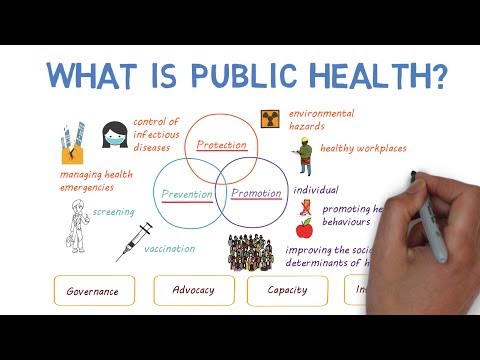What is Public Health and Benefits
Public health is the science and art of preventing disease, prolonging life, and promoting health through the organized efforts and informed choices of society, organizations, public and private, communities and individuals.
Public health is concerned with threats to health based on population health analysis. It encompasses the following:
- The study and control of communicable and noncommunicable diseases
- The promotion of healthy behaviors
- The provision of preventive and curative health services
- The creation of healthy environments
- The protection of vulnerable populations
Public health has a long and rich history, dating back to the ancient Greeks and Romans. However, it was not until the late 19th and early 20th centuries that public health began to take on its modern form. This was due in large part to the work of pioneers such as John Snow, who identified the importance of clean water in preventing cholera, and Florence Nightingale, who revolutionized the practice of nursing.
In the years since, public health has made significant progress in improving the health of populations around the world. Vaccines have eradicated or controlled many deadly diseases, such as smallpox and polio. Clean water and sanitation have reduced the incidence of cholera and other waterborne diseases. And public health campaigns have helped to reduce smoking rates and increase physical activity.
Despite these successes, there are still many challenges facing public health. In recent years, there has been a resurgence of infectious diseases, such as HIV/AIDS and tuberculosis. Obesity and other chronic diseases are also on the rise. And climate change is posing new threats to health, such as the spread of vector-borne diseases.
In order to meet these challenges, public health will need to continue to innovate and adapt. New technologies, such as big data and artificial intelligence, are being used to improve our understanding of disease and to develop new interventions. And public health professionals are working to build stronger partnerships with other sectors, such as education, housing, and transportation, to create healthier environments.
Public health is essential to the well-being of individuals and communities. By working to prevent disease, promote healthy behaviors, and create healthy environments, public health can help to improve the quality of life for everyone.
Some of the key concepts in public health include:
- Health determinants: The factors that influence health, such as genetics, environment, lifestyle, and access to healthcare.
- Disease prevention: The strategies used to reduce the incidence of disease, such as vaccination, screening, and behavior change interventions.
- Health promotion: The strategies used to improve the health of populations, such as education, social marketing, and policy change.
- Health equity: The fair distribution of health resources and opportunities.
Public health is a broad and complex field, but it is essential to the health of individuals and communities. By working to prevent disease, promote healthy behaviors, and create healthy environments, public health can help to improve the quality of life for everyone.
Some of the most important challenges facing public health today include:
- The rising rates of chronic diseases, such as obesity, heart disease, and cancer.
- The spread of infectious diseases, such as HIV/AIDS, tuberculosis, and Zika.
- The effects of climate change on health.
- The growing gap in health equity.
These challenges can be daunting, but they are not insurmountable. By working together, we can make progress in improving the health of populations around the world.
Here are some of the things that can be done to improve public health:
- Invest in research to better understand the causes of disease and to develop new interventions.
- Strengthen public health systems to ensure that everyone has access to preventive and curative healthcare services.
- Promote healthy behaviors through education, social marketing, and policy change.
- Create healthy environments by improving air quality, water quality, and access to safe housing and transportation.
- Address the social determinants of health, such as poverty, inequality, and discrimination.
Public health is everyone’s business. By taking action to improve public health, we can all help to create a healthier world for ourselves, our families, and our communities.





